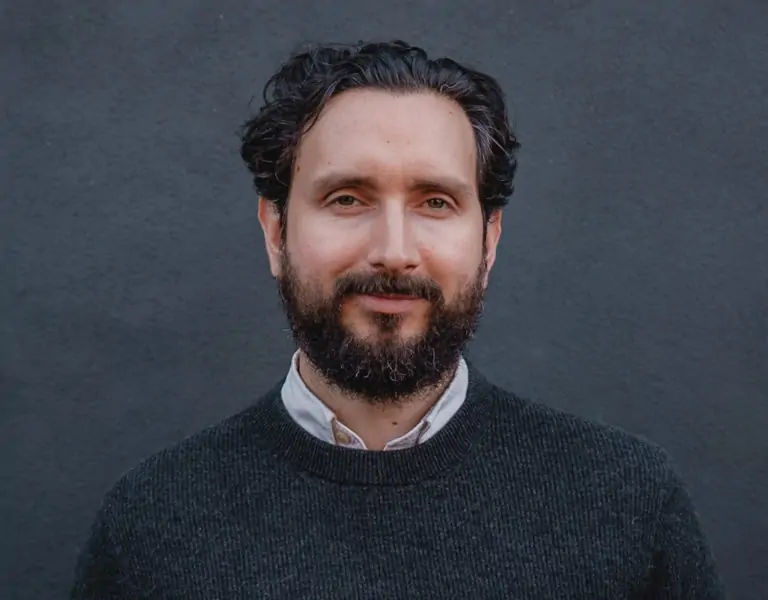Shining A Light On...
Gaffers 'R' Us / Jonny Franklin
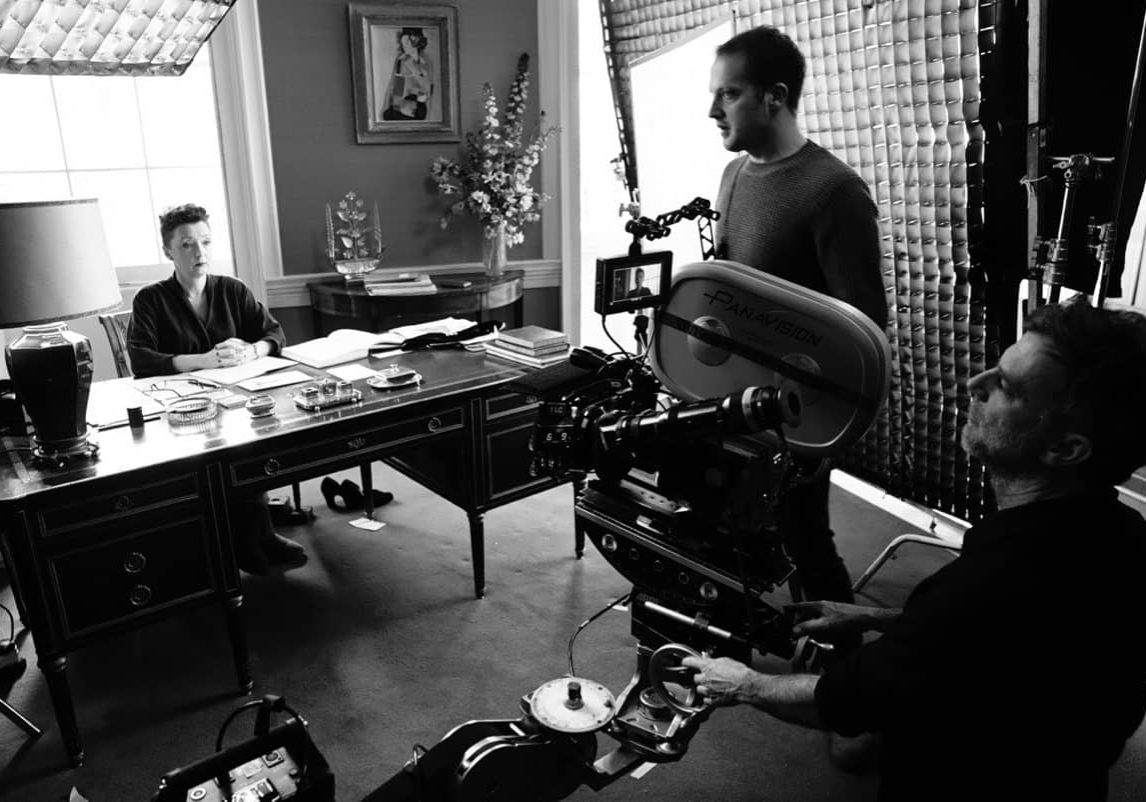
Shining A Light On...
Gaffers 'R' Us / Jonny Franklin
BY: David Wood
Fact file:
Age: 33
Born: Kings Lynn, Norfolk
Education: South Bank University
Lives: Queens Park, West London
Hobby/Passion: Travelling
Selected filmography:
Chaos Walking (2019)
Teen Spirit (2018)
Patient Zero (2018)
Phantom Thread (2017)
The Mummy (2017, second unit gaffer)
War Machine (2017, electrician)
Sink (2017)
The Mechanism Of Suspended Time – short (2016)
Black Mirror – Shut Up And Dance (2016)
The BFG (2016, electrician)
Alice Through The Looking Glass (2016, electrician)
The Take (2016, additional photography: second unit gaffer)
Call The Midwife – TV Series (2015, second unit gaffer)
Eddie The Eagle (2016, electrician)
Spectre (2015, electrician)
Mission Impossible: Rogue Nation (2015, additional photography: splinter unit gaffer)
Mr Selfridge – TV Series (2015, electrician)
Paddington (2014, electrician)
Glue – TV mini series (2014)
Panic (2014, gaffer: dailies)
Silk – TV Series (2011, electrician)
Nanny McPhee Returns (2010, electrician)
Burlesque Fairytales (2009, electrician)
The Bourne Ultimatum (2007, electrician)
Early years and training:
I went to South Bank University where I studied special effects – learning among other things, prosthetics and explosives. When I'd finished I quickly realised how people struggled to get jobs afterwards. I got work experience in a film studio. When the studio manager quit unexpectedly, I was left to look after the studio – thrown in at the deep end, where I had to create quotes, business reports, line budgets, as well as organising shoots on a daily basis. I didn’t know it at the time, but they were invaluable skills that have helped me a lot with the planning and budgeting part of life as a gaffer.
What inspired me to work as a gaffer?
From watching films from an early age, I was always interested in how they were made. I used to watch “making-of’s” and felt myself drawn to the camera and lighting side of things.
Then when working in the studio, helping out on different productions, I found myself edging even more heavily towards lighting. I found it was a role that came easily to me.
I’m quite a visual person, and I love how you could completely change the look and feel of something with lighting. I also enjoy the collaboration with the DP, being able to take their vision and create it on set.
It took a little while to get myself settled into the industry. I started doing mostly TV dramas, promos and commercials. Then, after a bit of perseverance, I was eventually given the chance to work for a day on Alice Through The Looking Glass with gaffer Harry Wiggins. I found myself doing more and more days until eventually I was part of his full-time crew. Harry is an incredibly intelligent and innovative gaffer, and I was extremely fortunate to be able to be a part of his crew. I learnt a lot from the way he worked.
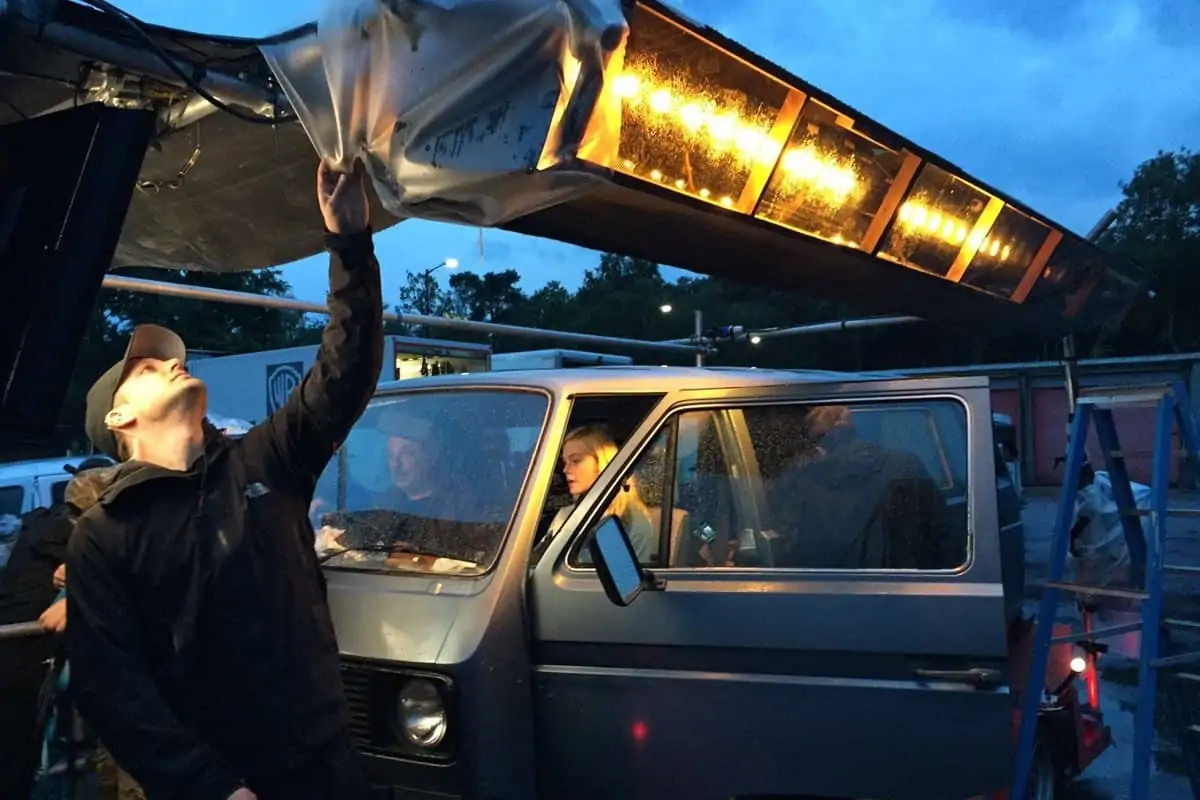

Pressure, expectation and confidence:
At 33 I am deemed quite young for a gaffer. When I worked on Phantom Thread, I was 32, at which point I think I was one of the youngest gaffers in the world, on a film of that budget at least. One of my latest films – Doug Liman’s Chaos Walking – has a budget of over $100m. I have worked on four films with budgets over $50m, so the pressure and expectation levels are high – meaning that confidence is needed to be able to meet the demands of the job.
There's nothing like working on a big film to give you that confidence. What really helped was my second unit experience on films such as The Mummy and Mission Impossible. Once I had worked on a big second unit, it definitely gave me the confidence to run the lighting team on a fully-fledged movie. I've also done a lot of setting-up and lighting tests with DPs such as Dariusz Wolski ASC, while we were waiting for gaffer Pat Sweeney to join the production. That was all good experience, and it was Pat who gave me the chance to light the second unit on The Mummy and a few other films.
I've worked alongside many great gaffers, for example David Smith on Mary Poppins, Star Wars and Spectre. Seeing gaffers that are as good David at work was an important part of my journey, and it was David who recommended me for Autumn Durald Arkapaw's Teen Spirit. That's led to quite a few things, including her next film – a Western set in New Mexico.
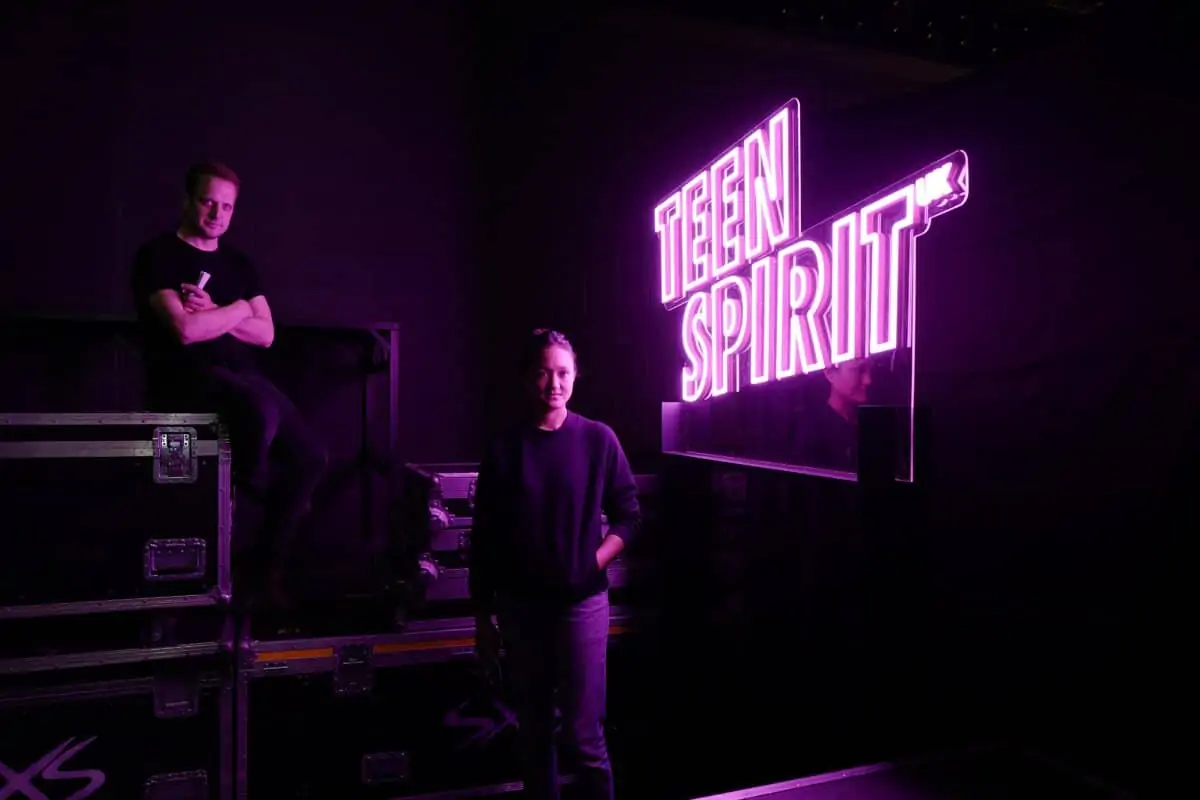
Second-guessing the DP:
I try and adapt quickly to the DP's style. Being with them for 6-7 days a week, you get to know them and can see which way they are going to go with lighting. Part of the skill you need is to always be prepared for what the DP is going to throw at you and having a solution ready before they ask for it.
On Chaos Walking, with Ben Seresin BSC ASC, we were shooting at an Olympic Stadium in Montreal. It was a huge concrete structure and the part that we were filming was on a kind of balcony; it had a curved roof and a small gap where the floor met the roof. We first had to control the light flooding in, then replicate it with our own. We ended up using around 42 ARRI M90 lamps all the way around the stadium, although because of angle of the light, there was a huge shadowed area in the centre of the set. So I anticipated this quite early on and installed a few hidden light boxes in the ceiling, to light up the middle of the space. So when Ben eventually asked for it, I was ready with a solution.
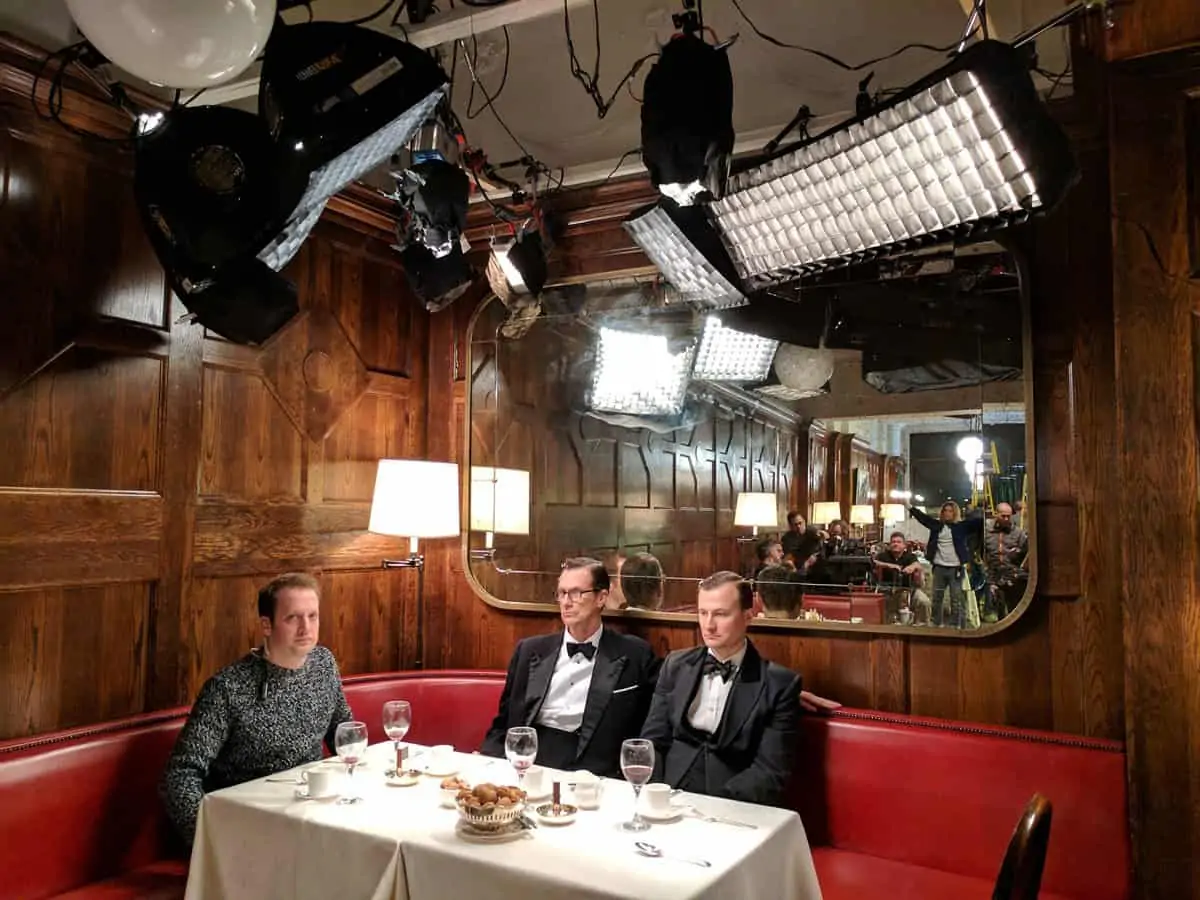
"When I worked on Phantom Thread (left), I was 32 - I think I was one of the youngest gaffers in the world, on a film of that budget at least. I have worked on four films with budgets over $50m, so the pressure and expectation levels are high."
- Jonny Franklin
Lighting for Phantom Thread :
On Phantom Thread, Paul Thomas Anderson's film about a famous dressmaker in 1950s London, Paul didn’t want the film to look glossy, but rough around the edges. He wanted to feel the grain in the filmstock. We went through a lot of testing to arrive on the right look.
At first he wanted big tungsten lamps and referred a lot to John Alcott BSC and his work on The Shining (1980). This way of lighting can be very beautiful, but takes a lot of time, and space to do, and it simply wasn’t possible. We were restricted at a lot of locations. At Fitzroy Square in London, we could only use the inside of the property, which meant we couldn't have lighting on the street. It was a bit of a nightmare, but I came up with a solution to build a bespoke rig within the railings of the property, using mainly LED and some well-hidden HMIs.
We had a few tricky locations on Phantom Thread; we shot one of the later scenes in the big ballroom inside Blackpool Tower. It was huge and came with its own set of challenges. Pre-shoot tests showed that the in-situ lighting wasn't suitable. The owners had changed the original bulbs for a more economical LED bulb, but they caused flicker and a horrible green hue.
Changing a couple of light bulbs isn't usually a problem, apart from this time there were over 600 in the wall lights and chandeliers. Doing that was a four-day job on its own!
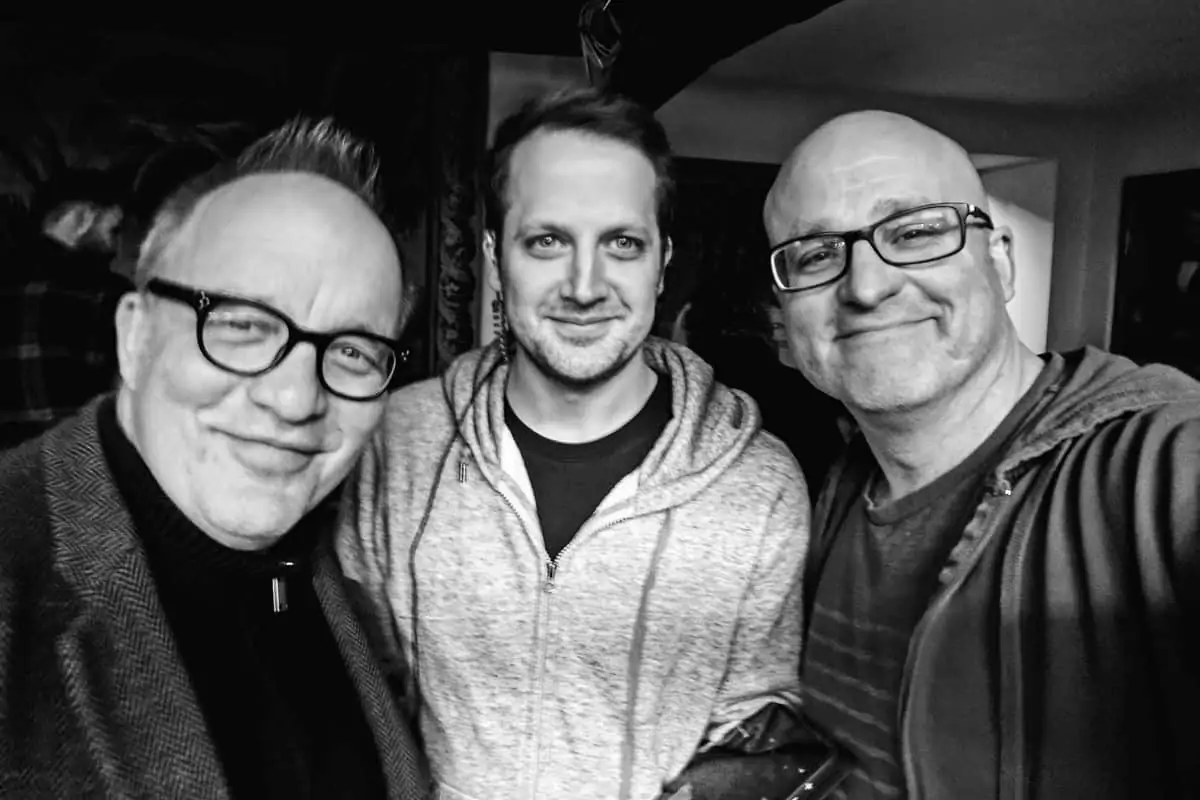
The quality of LEDs:
It used to be cameras that got updated every year, but now lighting does too. One thing that is changing fast is the quality of LEDs. They have improved a lot, but we still have to do a lot of testing. It's best to stick to trusted LED brands, because on a big budget film you don't want the risk of using lighting that's not tried and tested.
It can be difficult to keep on top of developments when you are busy for months at a time on shoots, but what helps is cultivating good relationships with your friendly lighting companies. MBS, for example, sends me new products to take on-set and try out, which can be a benefit for both parties. I learn the new equipment and they get to see what people think before investing in new lights.
LEDs certainly have big advantages. You can change colour temperatures almost instantly; you can have a whole studio go from Tungsten to Daylight at the slide of a fader. LEDs are more energy-efficient, cheaper to run and much more environmentally-friendly, but you always have to chose the best tool for the job. The only way to do that is to evaluate the situation and to know the equipment you have available to you. You may have a set that needs a lot of light, and LEDs just will not cut it, and you can only use big tungsten or HMI sources. It is the gaffer’s responsibility to make those calculations and make the right decision.
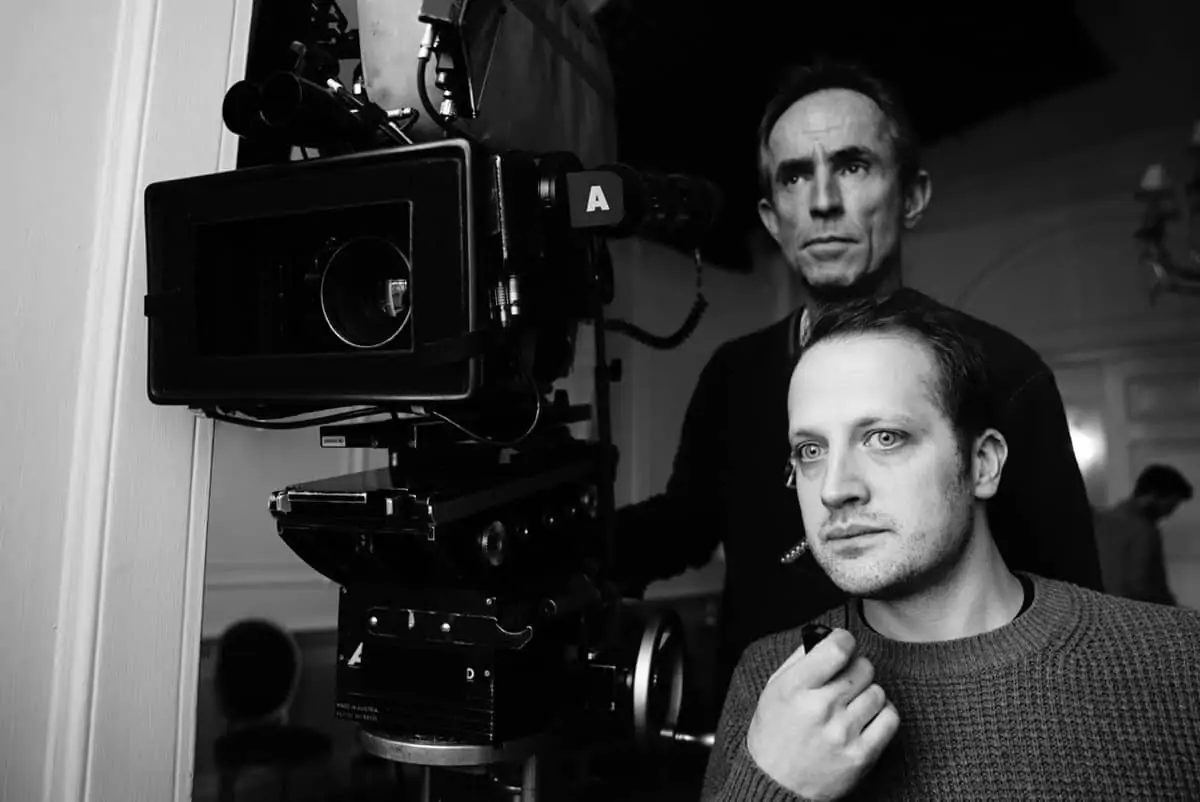
Cinematographer Ben Seresin BSC ASC says:
"I remember reading in one of the Samuelson Manuals for Cinematographers that DPs should be able to pre-empt the needs of directors. It's the same for a DP/gaffer relationship. I lean on a gaffer more than any other member of the crew. Without wanting to state the obvious, lighting is massively important for me, so I love working with guys who have taste and intuition. Jonny isn't afraid of putting ideas forward and I listen because I know he has a really good sense of light, composition and photography.
I find it limiting working with gaffers who are more technically-orientated. You take it for granted that they know the technical side, but Jonny's intuition and creative instincts are good too. He's part of a new breed of gaffers with enthusiasm, a good attitude and the confidence that sometimes comes with youth. There was a time where you weren't considered for a big production unless you had years and years of experience and dozens of movies under your belt, but for me that's only part of the equation. Jonny and I have quickly developed an easy shorthand where the focus of the conversation is about the creative rather than the technical side of lighting."
Cinematographer Autumn Durald Arkapaw says:
“I’m a lighting-oriented DP, so my relationship with my gaffer has always been the most important collaboration. My best experiences have been when they’ve shared the same taste as I do in the quality of light and shadow. Our work on Teen Spirit was unique, because the lighting starts analogue and moves toward digital. I’ve worked with many gaffers who don’t pay attention to what the light is actually doing after they've set it. Jonny is not one of those gaffers. He has a great eye for detail and pays attention. He is very talented in the way he reads his DPs and how he helps them execute exactly what they want, while also coming up with solutions to make the set-up more streamlined and creative. Essentially the lighting is one of the characters in the film, which made our collaboration so fundamental. Jonny and his team did a fantastic job.”


